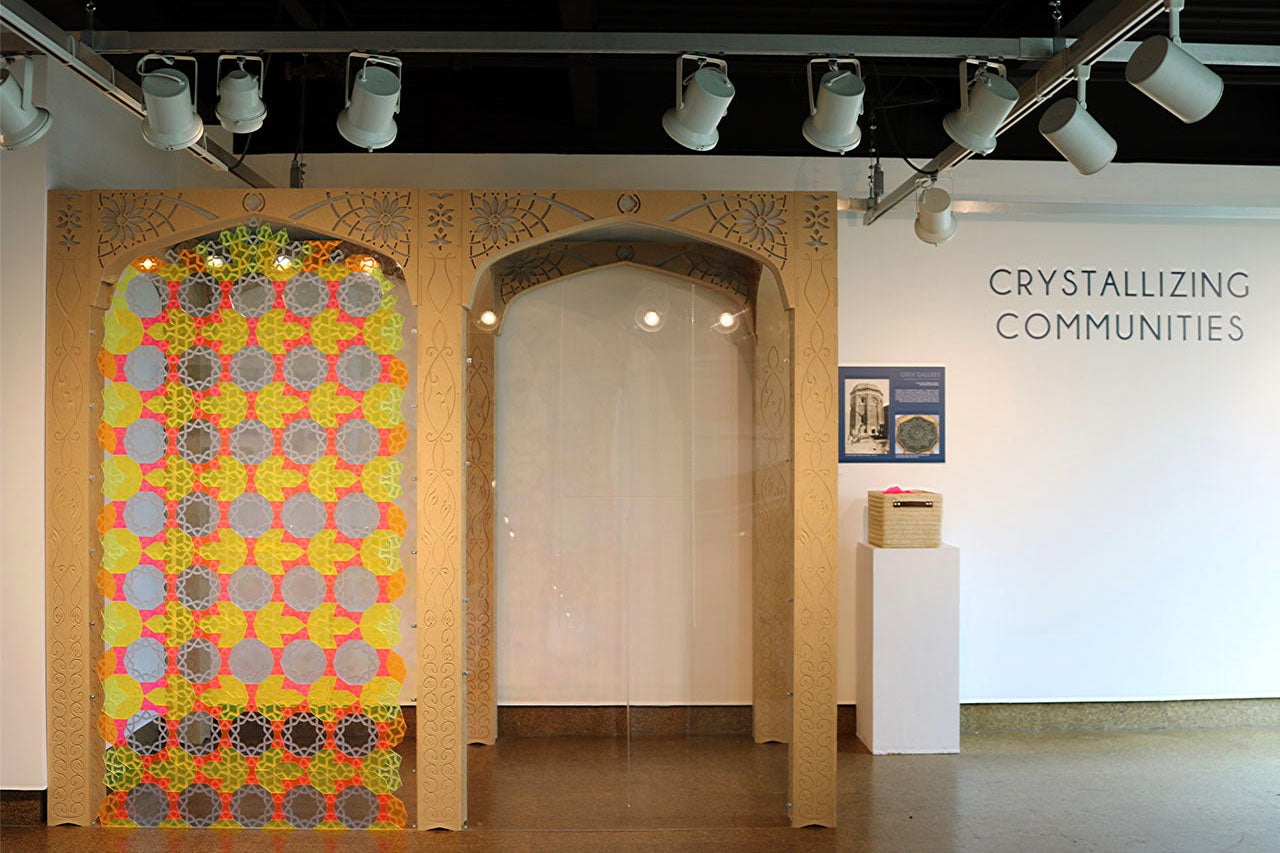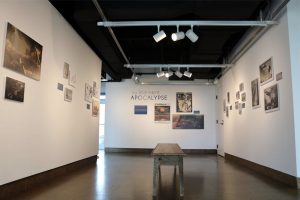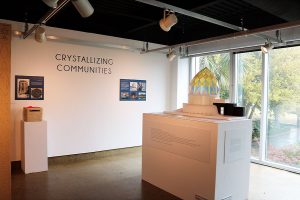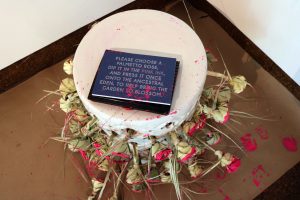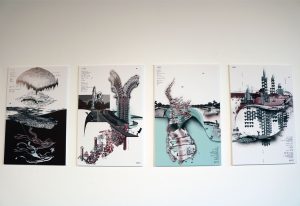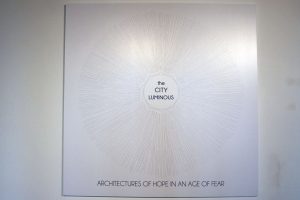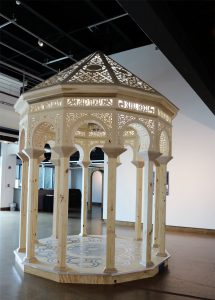How can a building offer a window to a better world? Two College of Charleston professors explore just that in “The City Luminous: Architectures of Hope in an Age of Fear.” Currently on view through May 5, 2019, the free exhibit, located at the City Gallery, shares architectural installations and images that endeavor to bring humans together in our complex, challenging times.
The exhibit was the brainchild of Jessica Streit, assistant professor of art and architectural history, and Nathaniel Robert Walker, assistant professor of architectural history, who approached the City of Charleston Office of Cultural Affairs with the concept and design for the show. They then worked with architects and designers far and wide to realize it.
“They have been fantastic partners in bringing about this fascinating look at one of the ways that mankind has dealt with existential dread and fear – by creating beautiful and moving spaces for contemplation,” says Anne Quattlebaum, gallery manager for the City Gallery.
As such, the exhibit represents a partnership leveraging the expertise of College of Charleston faculty to mine issues meaningful to the greater city of Charleston, and beyond.
Through immersive architecture installations and images, The City Luminous‘ works suggest a hopeful way forward for the world’s fractured communities. The exhibit centers around a 12-sided, plywood and aluminum Paradise Pavilion, designed by New World Byzantine’s Andrew Gould, which folds in Jewish, Christian and Islamic theological and architectural traditions.
Surrounding installations include a columnar hallway evoking the great spaces of the past and the limitless possibilities of the future and an interactive Girih wall featuring Persian tiles created by using abstract mathematics that reflect the way crystals grow.
“Infinity and intimacy, fragmentation and restoration, diversity and unity are the dichotomies that resolve into the City Luminous,” says Walker. He adds that other portions of the exhibition summon historical and modern images of fear and apocalypse, the shadows that the exhibit’s light attempts to dispel.
“City Gallery values the opportunity to showcase designs and ideas like these that both provide historical context to important ideas and encourage deep thought,” says Quattlebaum. In partnering with faculty from the College, the exhibit offers a broad exploration into a topic that spans cultures, religions and architectural eras.
This Saturday, April 13, at 3 p.m., the public is invited to a curatorial talk to take place at the City Gallery. During the event, Streit and Walker will guide attendees through the installations. The architectural designer Andrew Gould will offer a talk in the City Gallery on Wednesday, April 17, from 5:30 p.m. to 6:30 p.m.
City Gallery is located at Joe Riley Waterfront Park, at 34 Prioleau St. in downtown Charleston. Gallery hours are 11 a.m. to 6 p.m. Tuesday through Friday as well as 12 p.m. to 5 p.m. Saturday and Sunday. For more information, visit www.charleston-sc.gov/citygallery or call 843-958-6484.

